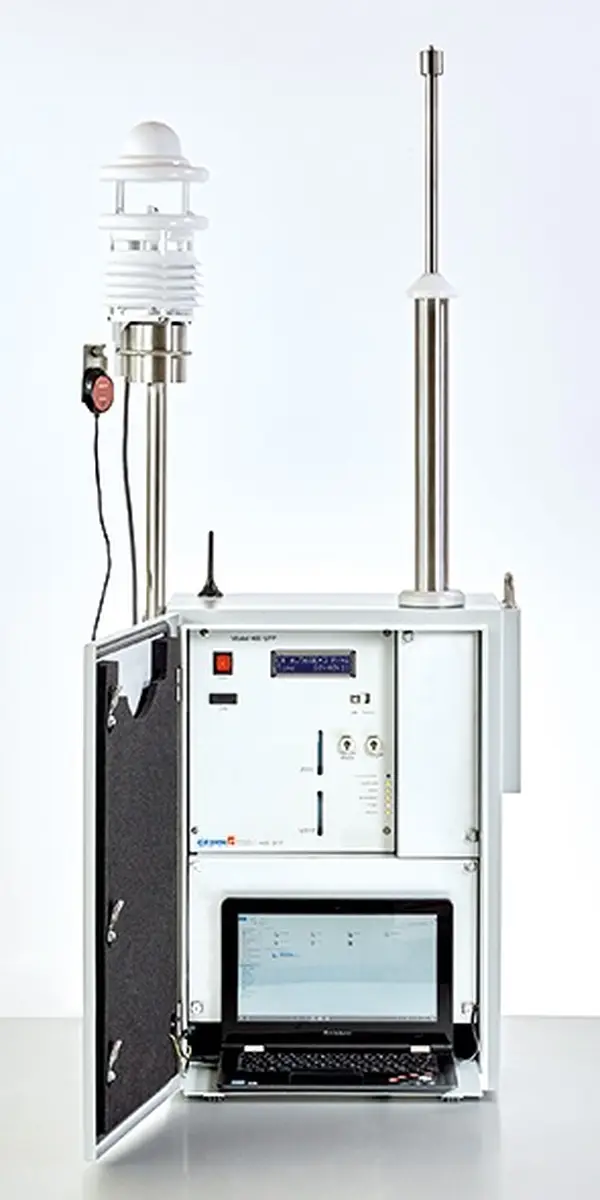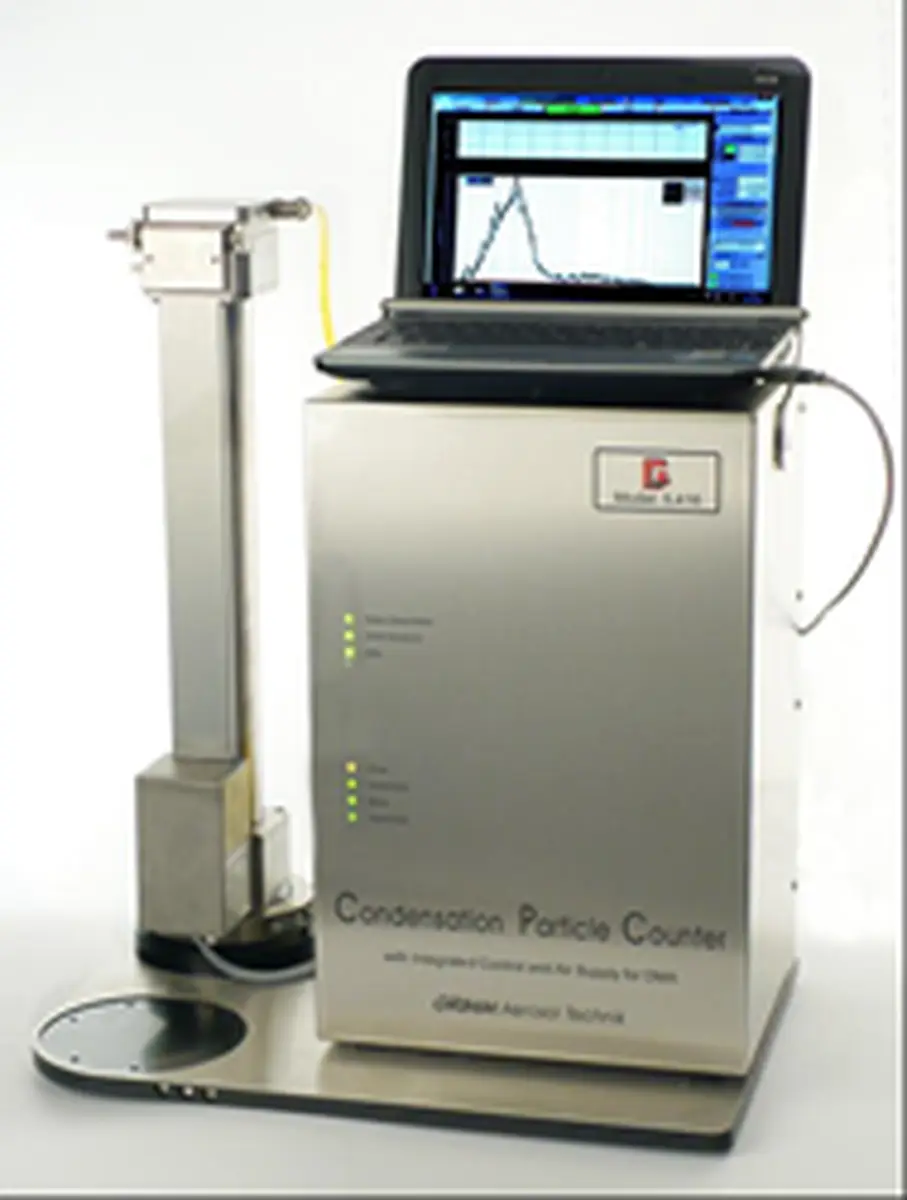Nano Particle Analysers

CPC (Condensating Particle Counter)
A Condensating Particle Counter (CPC) utilizes the principle of condensation on a (nano)particle — the so-called nucleation condensation. The CPC units from Grimm Aerosol Technik use Butanol, ensuring condensation on virtually any particle type.
Different Models
The CPC monitors range from laboratory models to robust continuous monitors designed for 24/7 use in weatherproof housings, with integrated conditioning for outdoor sampling.
Single Count Mode and Photometric Mode
In single count mode, concentrations from 100,000 to 150,000 p/cm³ can be accurately measured. In photometric mode (with corrections for coincidence effects at high concentrations), values up to 10⁷ p/cm³ can be determined. The CPC is configured and operated via software.
FCE (Faraday Cup Electrometer)
In a Faraday Cup Electrometer, charged nanoparticles release their charge, generating a very small current. This electric signal is converted into a particle count. This method is extremely fast and generally considered the reference method for nanoparticle counting. The FCE requires particles with a known charge distribution for accurate back-calculation. The signal must also be sufficiently above the noise threshold. The FCE cannot be used as a stand-alone instrument like the CPC and is less effective at measuring very low concentrations. However, it is more accurate and has a much faster response time.
SMPS (Scanning Mobility Particle Sizer)
 An SMPS system consists of a nanoparticle counter (CPC or FCE) preceded by a DMA (Differential Mobility Analyzer). A fraction of nanoparticles is separated based on mobility in an electric field. Negatively charged particles are attracted to a positive electrode, and at a specific voltage, only particles with a certain mobility pass through the DMA. This fraction is then counted by an FCE or CPC, providing a particle size distribution of the nanoparticles.
An SMPS system consists of a nanoparticle counter (CPC or FCE) preceded by a DMA (Differential Mobility Analyzer). A fraction of nanoparticles is separated based on mobility in an electric field. Negatively charged particles are attracted to a positive electrode, and at a specific voltage, only particles with a certain mobility pass through the DMA. This fraction is then counted by an FCE or CPC, providing a particle size distribution of the nanoparticles.
Available Models
The SMPS systems from Grimm Aerosol Technik are available in desktop/laboratory configurations and as 19” rack-mounted units. The latter is especially developed for environmental studies and air monitoring networks. The combination of DMA with CPC is referred to as SMPS+C, and with FCE as SMPS+E.
WRAS (Wide Range Aerosol System)
By combining an SMPS with an LSAS (Laser Scattering Aerosol Spectrometer), a highly precise measuring system is created for aerosols ranging from a few nanometers up to 35 µm. WRAS systems are available as laboratory setups as well as continuous monitoring systems for field use.
MiniWRAS
The Mini-WRAS (Mini-Wide Range Aerosol Spectrometer) is a laser aerosol spectrometer combined with the so-called NanoDiff, a nano sensor that estimates particle count and size between 10 and 250 nm. This sensor operates using electrical mobility for estimating diameter and uses an electrometer for counting. It provides a size distribution across 41 channels from 10 nm to 35 µm every minute.
